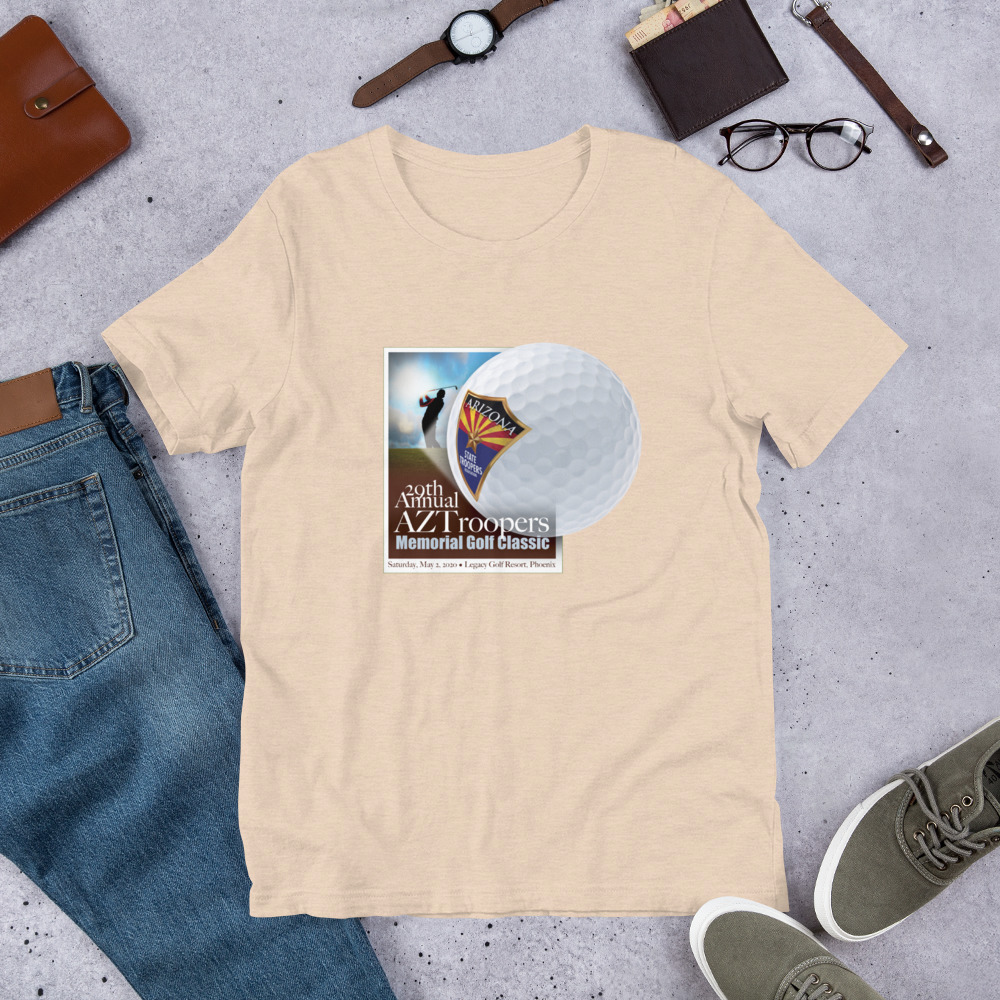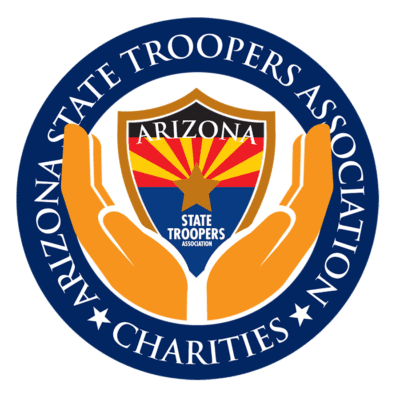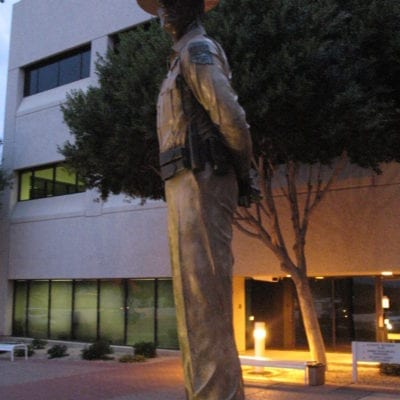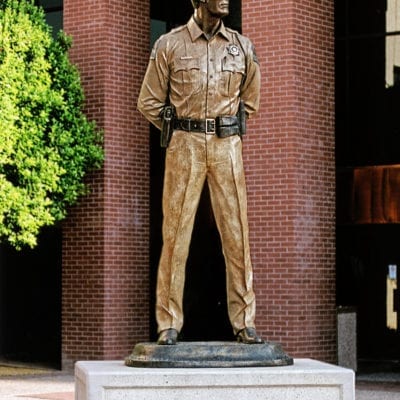Author: The Office of Justice Programs’ National Institute of Justice (NIJ)
By Becky Lewis TechBeat Magazine
To a casual observer, it might seem like the investigator is wasting his time: setting up his camera, putting on some kind of goggles and using nothing more than a flashlight to supplement the available lighting.
Except that’s not an ordinary flashlight. It’s an alternate light source (ALS), and the difference it can produce in detecting and documenting evidence would quickly make a believer out of that skeptical bystander.
Released in January 2018 by the National Institute of Justice’s Forensic Technology Center of Excellence (FTCoE), Landscape Study of Alternate Light Sources provides a basic understanding of the technology’s uses, benefits and limitations, and includes a glossary, case studies and information on products currently available on the market. The FTCoE is part of NIJ’s National Law Enforcement and Corrections Technology Center System.
ALS technology has been in use for a number of years, but recent innovations have led to a crowded and sometimes confusing market, with more than 50 devices from which to choose. The information included in the report is derived from current literature and interviews with users and technology developers, providing a thorough assessment of the considerations that affect procurement, training and use. It also includes product tables highlighting ALS devices available for purchase.
“ALS is well-established in the field for crime scene and sexual assault investigations, and other applications as well,” says Jeri Ropero-Miller, FTCoE director. “There have been several advances in recent years and the technology has become very portable. Handheld devices can be used by just one person, and you can greatly enhance photography by using its capabilities.”
“The technology has been consistently improving with the use of LEDs, better filters and reduced battery size,” says Rebecca Shute, who led the team that produced the report. “This has led to the market’s being really crowded, which is great, but it also creates a challenge for agencies looking to replace or implement the technology. Products range from small handheld flashlights that use only one wavelength to something the size of a shoebox that uses 16 or more wavelengths. Costs can range from $20 to over $10,000.”
All of these factors combined to make the technology a candidate for one of the center’s landscape reports, which more often focus on cutting-edge technology, but always seek to help law enforcement agencies and forensic laboratories select the device that works best to meet their needs. When it comes to ALS, those needs most commonly include crime scene investigation, forensic biology, latent prints, trace evidence, medicolegal death investigation and forensic nursing, and the report provides illustrative scenarios for each type of use.
“We designed this report based on applications,” Shute says. “We understand that many agencies use ALS, both in the lab and in the field, and we wanted to provide a way for them to make better informed purchasing decisions. We wanted them to be able to see themselves in the report and say ‘this is me.’ ”
ALS devices included in the scenarios and the report emit light in the visible and ultraviolet regions of the electromagnetic spectrum. The ALS causes certain materials to fluoresce, which enhances the ability to visualize specific evidence. Evidence illuminated by these light sources can be seen by using a barrier filter, such as goggles, and documented for court purposes with a standard digital camera equipped with an appropriate filter.
“You can use ALS devices to detect a wide variety of evidence, things like hairs and fibers, body fluids, even gunshot residue,” Shute says. “They can save a lot of time at crime scenes, and as we all know, time is valuable. And you don’t have to go to a Mercedes model to get good results; agencies often do a lot of research and still choose the smaller, less expensive devices.”
She reminds agencies that choosing the right barrier filter also plays a key role in effective ALS use, and adds that it takes proper training to prove a device’s worth.
Ropero-Miller says the training could come via a train-the-trainer format once someone in the agency gets up to speed on the use of the equipment, adding, “This is a technology that can be very useful no matter what the size of the agency. A small or rural agency with more budget constraints can still implement it at an affordable low cost.”
Shute made use of some of that training herself, taking a hands-on ALS photography class to help inform the research: “I had conducted a large number of interviews with users over the telephone that were helpful, but I didn’t understand what they meant by certain things, such the challenges of using a device with a ‘hot spot.’ By taking the training, I got to use it first-hand and observe others using it first-hand, and I learned that using ALS requires patience, keen eyes, knowing what to look for and choosing the right filters.”
All of those considerations — training, the right filters, sifting through the numerous available devices — combine to make this technology innovative, even though it’s not new, Ropero-Miller says: “When we think of innovation and novel technologies, we think they have to be completely new, but I think ALS is a good example of how a well-established technology can become so enhanced and innovative that it’s worth doing outreach to ensure the field knows about the advances.”
Landscape Study of Alternative Light Sources can be downloaded here. For more information on the programs of the FTCoE, contact Jeri Ropero-Miller at jerimiller@rti.org. For more information on forensics programs of the National Institute of Justice, contact Gerald LaPorte, Director, Office of Investigative and Forensic Sciences, at Gerald.LaPorte@usdoj.gov.






